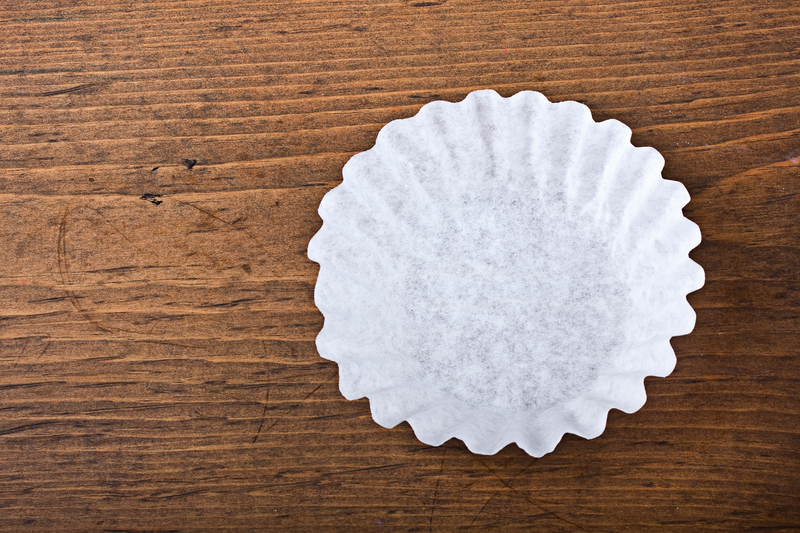From Mouldy to Clean: Window Sill Cleaning Tips
Posted on 15/08/2025
From Mouldy to Clean: Window Sill Cleaning Tips
Windows are the eyes of a home, inviting sunlight and fresh air inside. But when mould and dirt creep onto your window sills, they not only mar the beauty of your space but can also affect your family's health. If you're looking for the ultimate guide on cleaning window sills, from tackling stubborn mould to achieving a sparkling finish, you're in the right place!

Why Does Mould Grow on Window Sills?
Before jumping into window sill cleaning tips, let's understand why mould appears in these areas. Window sills are particularly susceptible to moisture due to condensation from temperature differences between the indoors and outdoors. The resulting damp environment is a perfect breeding ground for mould and mildew.
- Poor ventilation: Limited airflow encourages mould growth.
- Condensation: Water droplets frequently gather on windows and sills.
- Dirt accumulation: Dust and organic debris can feed mould colonies.
- Leaking windows: Damaged seals allow rainwater to seep in.
*Ignoring mould on your window frames and sills* can lead to allergic reactions, structural wood damage, and unsightly stains. Taking proactive cleaning steps is the key to maintaining a healthy and attractive home.
Essential Tools and Materials for Window Sill Cleaning
The right tools make all the difference when it comes to restoring your window sills from mouldy to clean. Gather the following before you begin:
- Microfiber cloths or soft sponges
- Bristle brush or old toothbrush
- Spray bottle
- Rubber gloves to protect your hands
- Face mask (especially for mould removal)
- Mild detergent or all-purpose cleaner
- White vinegar or hydrogen peroxide for mould and mildew
- Baking soda for extra scrubbing power
- Vacuum cleaner with brush attachment
- Soft towels for drying
Pro Tip: Avoid using harsh bleach solutions, especially on painted or natural wood sills, as they can cause discoloration or damage.
Step-by-Step Guide to Cleaning Window Sills
Step 1: Remove Loose Dirt and Debris
Start by vacuuming the window tracks and sills with a brush attachment or use a dry microfiber cloth to wipe away dust, cobwebs, and loose dirt. This helps prevent scratching during deeper cleaning.
Step 2: Prepare Your Cleaning Solution
Depending on the level of grime, choose your cleaning agent:
- For light cleaning: Mix warm water with a drop of dish soap or mild detergent.
- For mouldy window sills: Mix equal parts white vinegar and water or use 3% hydrogen peroxide for a more potent solution.
- To freshen up: Add a few drops of essential oil like tea tree for natural anti-fungal properties.
Step 3: Tackle Mould and Mildew
Mould removal requires special caution. Open your window for ventilation and don your gloves and a mask.
- Soak the affected area with your vinegar or hydrogen peroxide solution.
- Allow it to sit for 10-15 minutes; this will help break down the mould.
- Scrub the surface gently with a toothbrush or small bristle brush.
- Use paper towels or a cloth to wipe away loosened mould and moisture.
- Repeat the process for stubborn spots.
Important: Never mix ammonia and bleach, as this creates toxic fumes.
Step 4: Stubborn Stain Removal
If you notice remaining stains or black marks after cleaning, make a paste with baking soda and water. Apply it to the spots, let it sit for about 10 minutes, then scrub gently and wipe away.
Step 5: Clean and Polish the Sill
Wipe down the entire window sill with your chosen cleaner to remove any last residue. Use a dry, clean towel to absorb excess moisture and prevent future mould growth.
Step 6: Final Touch for Shine
For wooden sills, apply a small amount of wood polish or oil to restore shine and protect the surface. For UPVC or painted sills, wipe down with a glass cleaner or vinegar solution for a streak-free finish.
Window Sill Cleaning According to Material
Different window sill materials require specific care to avoid damage. Here are key guidelines for each type:
1. Wooden Window Sills
- Use minimal water to avoid warping and rot.
- Always dry thoroughly after cleaning.
- For deep mould, lightly sand the area after cleaning and touch up with wood stain or varnish.
2. UPVC or Vinyl Window Sills
- UPVC sills are durable and easy to clean. Use mild soap and water.
- Avoid abrasive pads or harsh chemicals to prevent scratching.
- For stubborn marks, a small amount of bicarbonate of soda paste works wonders.
3. Painted or Metal Window Sills
- Use a soft sponge and avoid scratching the painted surface.
- Dry thoroughly to prevent rust or paint bubbling.
4. Stone or Marble Window Sills
- Never use acidic cleaners like vinegar on marble or natural stone.
- Opt for stone-safe pH-neutral cleaners and soft cloths to maintain shine.
How to Prevent Mould and Keep Your Sills Spotless
Prevention is always easier than cure when it comes to window sill cleaning! Follow these expert tips to keep your sills free from mould and dirt:
- Wipe window sills weekly with a dry or slightly damp cloth to catch dust and moisture early.
- Open windows for ventilation regularly, especially in areas prone to humidity, like kitchens and bathrooms.
- Use a dehumidifier in rooms where condensation is a persistent problem.
- Check and repair window seals to prevent leaks and water ingress.
- Remove house plants away from sills if you notice frequent dampness or mould.
- Paint sills with anti-mould paints for extra protection, particularly in older homes.
- Clear window tracks and drains of debris to let rainwater escape freely.
Common Mistakes to Avoid When Cleaning Window Sills
Even with the right cleaning methods, it's easy to make simple mistakes. Here are the top pitfalls to watch out for:
- Using Too Much Water: Excess water seeps into wood and under paint, causing rot, warping, or further mould issues.
- Scrubbing Too Hard: Abrasive pads or forceful scrubbing can damage paint or scratch UPVC surfaces.
- Ignoring Window Frames and Tracks: Dirt and mould often hide in corners and tracks, so give these areas attention as well.
- Not Drying Properly: Leaving sills damp, especially wood or metal sills, enables mildew and rust to develop.
- Skipping Safety Gear: Direct contact with mould can cause allergic reactions or respiratory issues -- always use gloves and masks.
Natural Versus Chemical Cleaners for Window Sills
Many homeowners wonder whether to use commercial window sill cleaners or natural products. Here's a quick comparison:
- Natural Cleaners: Vinegar, baking soda, and hydrogen peroxide are effective and non-toxic. Ideal for mild to moderate mould and everyday dirt.
- Chemical Cleaners: Strong mould removers and disinfectants can be necessary for severe infestations but may emit fumes and damage certain surfaces.
Tip: Test any new cleaning solution on a small, inconspicuous area first to ensure it doesn't cause damage or discoloration.
How Often Should You Clean Window Sills?
A regular cleaning schedule will help you stay ahead of mould and dirt buildup:
- Weekly: Dust and wipe down sills during routine cleaning.
- Monthly: Deep-clean and inspect for any signs of mould or moisture damage.
- Seasonally: Check and reseal windows if needed, and give sills a thorough clean.
For homes in rainy or high-humidity climates, checking sills more frequently is wise to prevent persistent mould growth.

FAQs: Window Sill Cleaning Tips
- Can I use bleach to clean mould from window sills?
Bleach can work on non-porous surfaces but should be avoided on wood or painted sills. Use vinegar, hydrogen peroxide, or dedicated mould removers. - What's the best way to dry window sills after cleaning?
Use a clean, dry towel to remove all moisture. Prop open windows or use a fan for faster drying, especially in humid environments. - How do I clean narrow window tracks?
Use a vacuum's crevice tool, an old toothbrush, or cotton swabs dipped in cleaning solution to reach tight spots. - Is mould on window sills dangerous?
Mould can trigger allergies and impact indoor air quality. Always clean thoroughly and address underlying moisture sources.
Conclusion: Say Goodbye to Mouldy Window Sills!
*With the right tools, regular upkeep, and a few clever techniques*, your window sills can go from mouldy and grimy to sparkling clean. Healthy, pristine window sills don't just look better -- they help keep your home's air fresh and contribute to a safer living environment.
Remember:
- Act quickly at the first sign of mould.
- Use proper cleaning methods based on your sill's material.
- Keep up with a regular cleaning routine to prevent future issues.
By following these effective window sill cleaning tips, you can confidently maintain your home's beauty and health for years to come.
If you enjoyed these tips, share them with other homeowners and keep your windows -- and your view -- always clear and clean!



